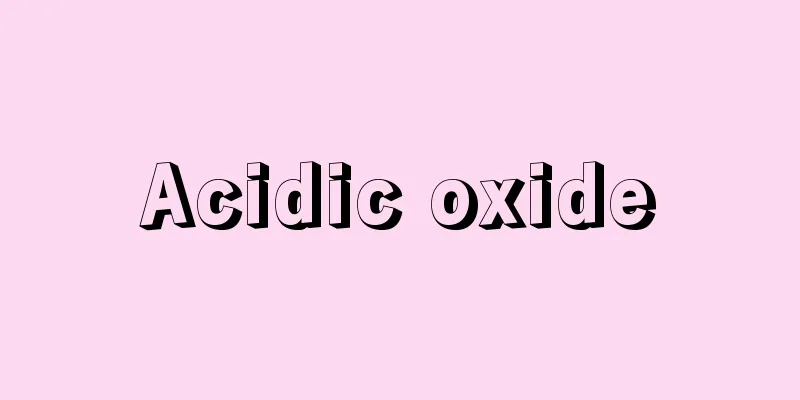Acidic oxide

|
Acidic oxides can react chemically with alkali to produce salt and water. Generally speaking, most non-metallic oxides are acidic oxides. Acidic oxides belong to acid anhydrides. The more common ones are sulfur dioxide, called sulfuric anhydride, and carbon dioxide, called carbonic anhydride. Their common feature is that they can react chemically with water to produce acids, and react with alkalis to produce salt and water.
Generally, they are non-metal oxides and high-valent oxides of certain transition metal elements. For example, phosphorus pentoxide P2O5 [that is, the anhydride of phosphoric acid], manganese heptoxide Mn2O7 [that is, the anhydride of permanganic acid], chromium trioxide CrO3 [that is, the anhydride of chromic acid], etc. CO, NO, etc. are neither acidic oxides nor alkaline oxides, but non-salt-forming oxides. Water is a special oxide. We know that alkali reacts with acid to produce salt and water, alkali reacts with certain non-metallic oxides, and carbonate reacts with acid to produce salt and water. For example 2NaOH+CO2=Na2CO3+H2O Ca(OH)2+SO3=CaSO4+H2O Ca(OH)2+SO2=CaSO3↓+H2O Such non-metallic oxides are called acidic oxides Most non-metallic oxides are acidic oxides. Among the non-metallic oxides we are familiar with, carbon monoxide and nitric oxide are not acidic oxides. Because their properties are different from those of acidic oxides, they are usually not classified as acidic oxides. NO2, N2O, etc. are not acidic oxides either. Generality 1. Reacts with water to generate the corresponding acid (except for silicon dioxide SiO2, which does not react with water) 2. Reacts with alkali to produce only one salt and water 3. Reaction with alkaline oxides
1. Most acidic oxides can directly combine with water to form oxygen-containing acids. CO2+H2O=(reversible)H2CO3 SO3+H2O=H2SO4 SO2+H2O=(reversible)H2SO3 (sulfurous acid) 2. Oxygen-containing acids can also be decomposed by heat to produce acidic oxides. For example, heating sulfurous acid can produce sulfur dioxide and water: H2SO3=SO2+H2O Here, sulfur dioxide can be regarded as the product of dehydration of sulfurous acid. SiO2, N2O5, are also acidic oxides, but silicon dioxide is insoluble in water and cannot directly react with water to form silicic acid. 3. The most important basis for determining acidic oxides is that the valence of each element remains unchanged before and after the chemical reaction. 4. It is composed of two elements, one of which is oxygen.
Most of the acidic oxides are non-metallic oxides. Most of the non-metal oxides are acidic oxides. Only oxygen-containing acids have acidic oxides. Carbon monoxide, nitric oxide, and nitrogen dioxide are not acidic oxides. |
<<: How to get rid of fleas on your body
>>: There are small red bumps on the tongue
Recommend
There is a lump in the crack of my butt
The crevice between the buttocks is also the loca...
Self-recovery from obsessive-compulsive disorder
Many people have some obsessive-compulsive disord...
It doesn’t matter if you can’t cook, I’ll teach you 10 tricks to “cheat” food
But you don’t know how to cook fish-flavored pork...
How to treat eczema during pregnancy?
Pregnancy eczema is prone to occur in the late st...
Things to note about badminton courts
Badminton has become a very popular fitness sport...
What are the best ways to moisturize hair? Six tips for hydrating hair
Some people are born with dry and yellow hair, wh...
Tongue tie surgery
Tongue tie mainly refers to a thin strip of tissu...
How to fix rice that is too wet
Normally, when you are stewing rice, the rice is ...
The enema operation process turns out to be like this
Enema is a surgical procedure in which medicine i...
What happens if lumbar muscle strain is serious? Avoid complications
Long-term poor sitting posture and weight-bearing...
Can acupuncture be used for a sprained ankle?
Ankle sprain is a very common condition in people...
The most common symptom of bladder cancer is hematuria
The most common symptom of bladder cancer is hema...
What symptoms can eye melanoma cause? Eyes with these symptoms may be melanoma
Ocular melanoma is a relatively common primary ma...
Methods to induce menstruation after IVF egg retrieval
Nowadays, many couples suffer from infertility du...
Are aluminum products harmful to the body?
In our daily lives, we may come into contact with...









